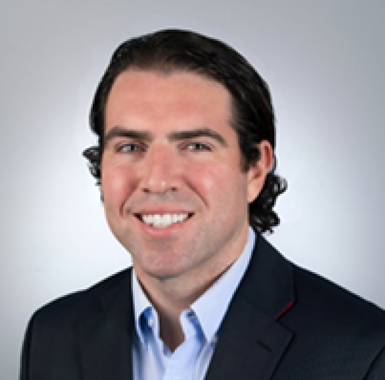Titrations: To Automate or Not to Automate?
What considerations should you keep in mind for automatic titrations? Conor McAnespie of Hanna Instruments discusses the benefits of auto titrators.

Q: We are contemplating new solutions for analyzing baths. Should we use automatic titrations? What considerations should we keep in mind?
A: The most common testing process I have observed for analyzing baths is titrations. Titrations are normally done to determine appropriate adjustments to prevent degradation of the baths. While finishers are familiar with this, they may not realize there is more than one way to perform titrations. I have observed many performed manually, using a manual burette. However, if you are looking to improve the efficiency of your lab (especially when adding new lines and new business) without negatively affecting your lab functionality, then automating these titrations is something to consider.
Titrations are vital, being used as a measuring procedure in just about every tank, with the exception of rinse tanks. Shops titrate cleaning baths for alkalinity, and pickling baths for acidity. To make sure the entire plating process occurs, they titrate for chloride. At electroless plating shops, one of the most popular activation reagents is hypophosphite. To prevent this from degrading, the shops will titrate. Finally, for metals that do not need to be measured for trace amounts, titration is a standard procedure for measurement. Inconsistent titration results can prove detrimental to an overall shop’s procedure and ultimately, the delivery of the final product.
Finishers will want to keep this in mind when evaluating manual vs. automatic titrations. Manual titration can be cost-effective initially; only requiring a manual burette, the beaker, titrants and color indicator. There is a simplistic nature to manual titrating since it requires less investment and is a “low-tech” option. For these reasons, finishing shops will adopt this way of titrating. However, even with these perceived benefits, finishing shops are making sacrifices in other areas.
One consideration is the accuracy of titrations and inconsistent results, which can lead to retests or worse, faulty parts. Manual titrations use color changes to indicate the end of the titration. Color changes cause confusion for two reasons:
- Color changes are subjective and lead to inconsistency amongst different people running the test. What one person interprets as green for example, might not be the same as the next person.
- Some titrations have swift color changes. Because of this, the ultimate endpoint can be missed and lead to overshooting the endpoint.
Finishers looking to prevent these inaccuracies should consider automating their titrations.
When evaluating the higher capabilities that come with automating titrations, it is important to understand that a higher upfront investment is required. Manual titration is more cost-effective initially, while an ROI (return on investment) is usually seen within 1-2 years after the purchase of an automatic titration system. Another consideration is accuracy. A manual titration test may be quicker than one test on the automatic titrator. But, if you run multiple tests, you will actually see your results becoming more accurate per test with automatic titrations. Due to all the moving pieces with manual titrations, the more tests performed can mean a higher probability of error with each test. With an automatic titrator, you have a system with a pre-programmed method. This method acts as the system’s brain, organizing all the features to make the titration occur, and then directing the parts of the titrator. These features include the correct titrant, probe, and the pre-calculated endpoint.
Automatic titrators do not rely on the sight of color changes to determine the endpoint or the lab person to stop the titrant from flowing. Instead, it uses a potentiometric probe (pH, ORP, or ISE) or a photometric probe, a predetermined endpoint (sensed by the probe), and an automatic pump that ensures accurate doses are delivered to your endpoint. This prevents inconsistencies or overshooting the endpoint that comes from subjective color change endpoints.
In addition, you are freeing up the operator’s time for other lab tasks, since there is no need to stay through the titration to manually stop it. Once the titration is complete, the results will be saved on the titrator and can be exported to a digital report. This prevents the results from getting misread or tracked incorrectly. A file (.CSV, for example) can then be used to transfer to management software, or any other place finishers choose to store their results.
Ultimately, finishers have two titration options, and it will come down to prioritizing the right fit for your testing needs. Automatic titrators cut down the amount of time titrations occupy your workforce. In addition, they lessen the possibility of errors occurring; preventing retests or lab-caused faulty parts. In summary, an automatic titrator will make a lab efficient enough to achieve its potential of ultimately withstanding the growing pains new business or added plating lines can cause.
About the Author

Conor McAnespie
Conor McAnespie is East Regional Sales Manager for Hanna Instruments. Visit hannainst.com.
Related Content
AESF Heritage: The 2002 Hydrogen Embrittlement Seminar No. 4: Hydrogen Embrittlement – A Personal View
This is last of four papers presented during AESF Week 2002 at the Rosen Center in Orlando, Florida on January 30, 2002, as part of the Hydrogen Embrittlement Seminar. This paper presents a comprehensive overview of the research into hydrogen embrittlement at the turn of the century. The full paper on this work can be accessed and printed at short.pfonline.com/NASF24Sep4.
Read MoreMastering Uniformity Through Surface Prep Standardization
By standardizing surface preparation processes and adopting surface energy measurement, a company can achieve uniformity, quality and cost reduction.
Read MoreNASF/AESF Foundation Research Project #121: Development of a Sustainability Metrics System and a Technical Solution Method for Sustainable Metal Finishing - 12th Quarterly Report
This NASF-AESF Foundation research project report covers the twelfth quarter of project work (January-March 2023) at Wayne State University in Detroit. In this period, our main effort concentrated on documenting technical content that was yet to be reported, including analysis of costs for specific technologies for sustainability improvement.
Read MorePowder Coating Overcomes Post Forming
Six Sigma methodology, open communication, and collaboration produce results for leading boat manufacturer.
Read MoreRead Next
PFAS in Surface Finishing: Where is it Going?
Regulation of PFAS chemicals continues to increase — here are some steps finishing operations can take to prepare.
Read MoreHow to Choose the Right Coating for Fasteners
Choosing the proper coating for fasteners can help with performance by improving durability and lifespan. In this helpful Ask the Expert article, Mark Schario of Columbia Chemical offers advice for choosing the right fastener coatings.
Read MoreTroubleshooting Alkaline Zinc
One of the most common problems that can arise when plating with alkaline zinc is an imbalance of brightener in the solution. In this helpful Ask the Expert article, Chad Murphy of Columbia Chemical discusses how different zinc metal concentrations and brightener concentrations can impact efficiency.
Read More













.jpg;maxWidth=300;quality=90)







